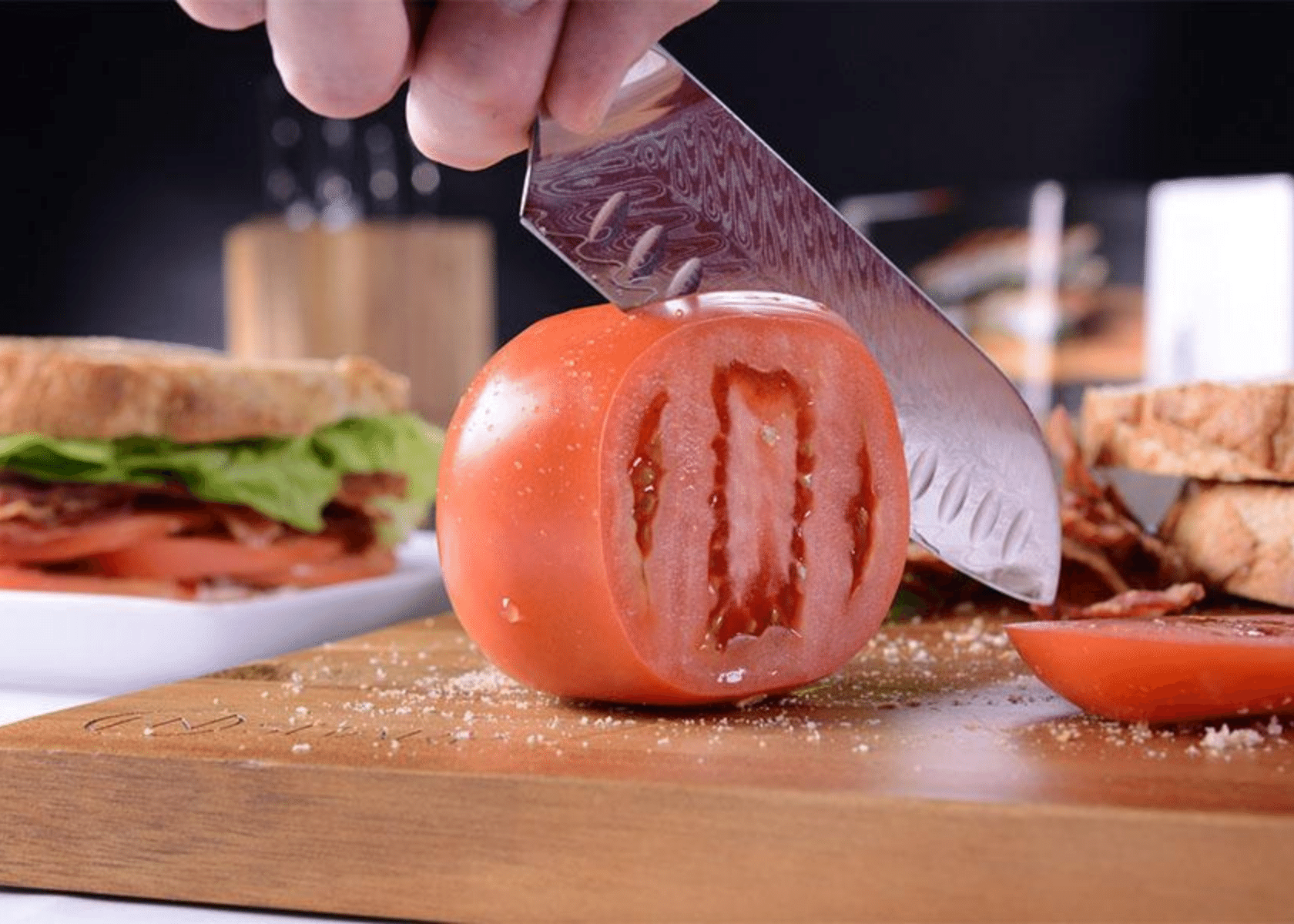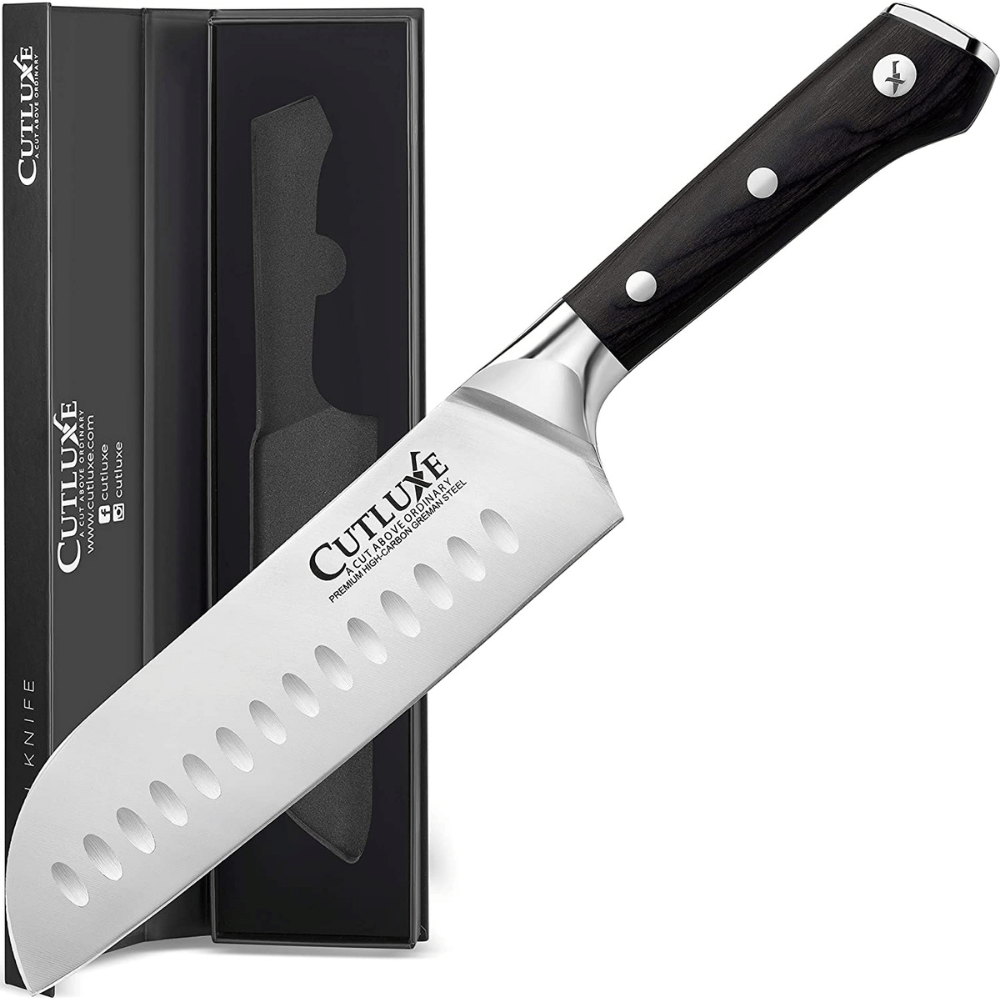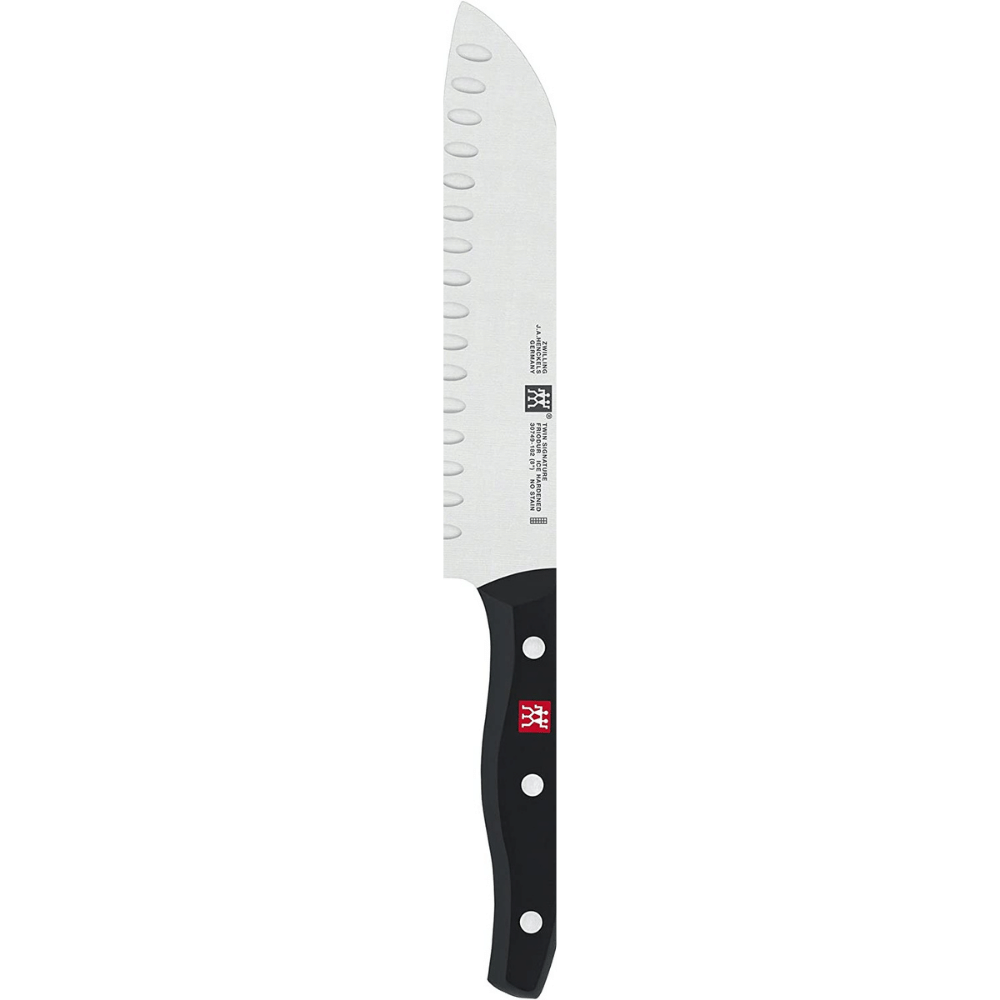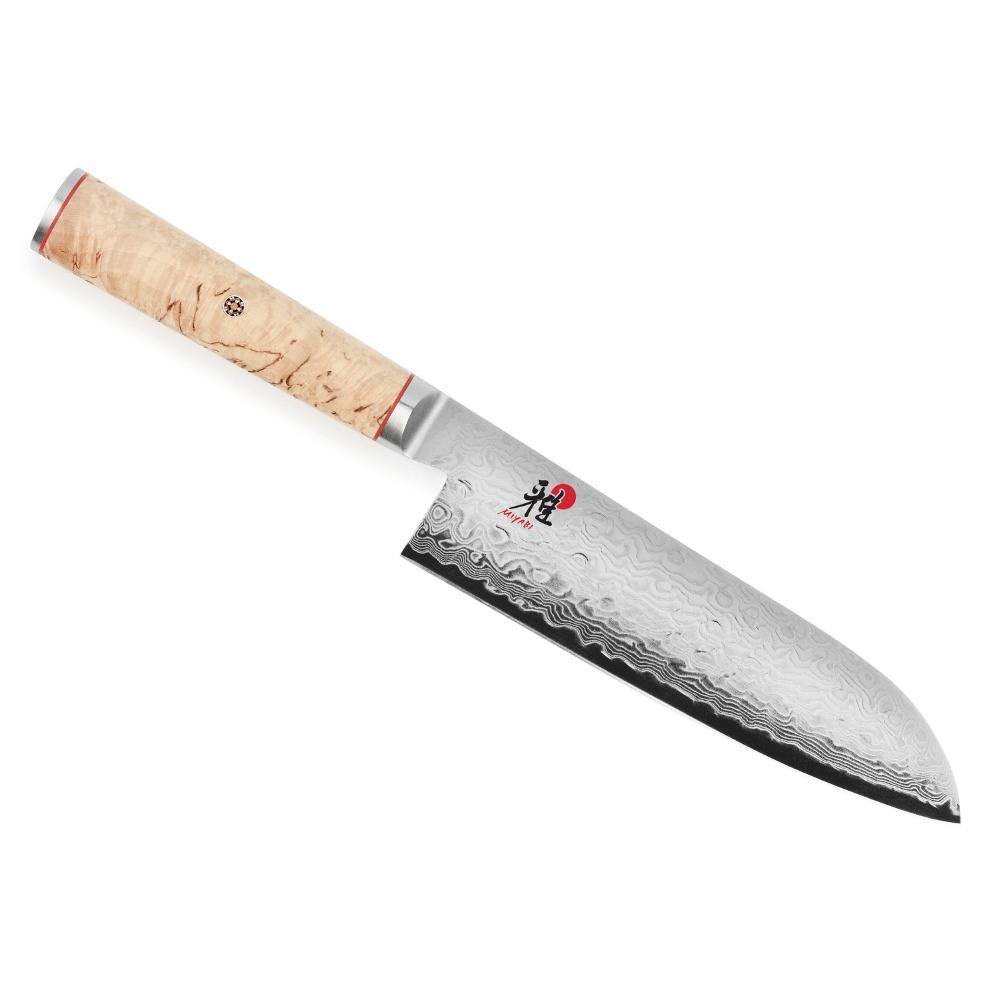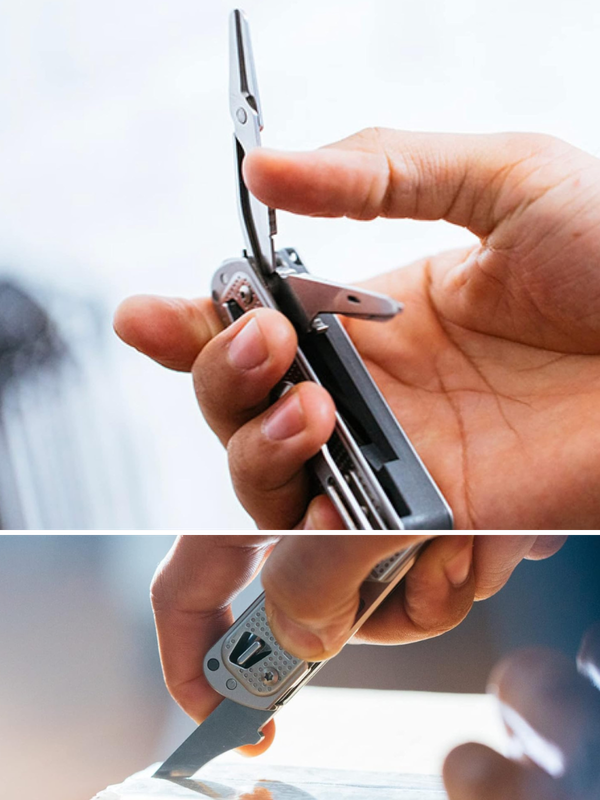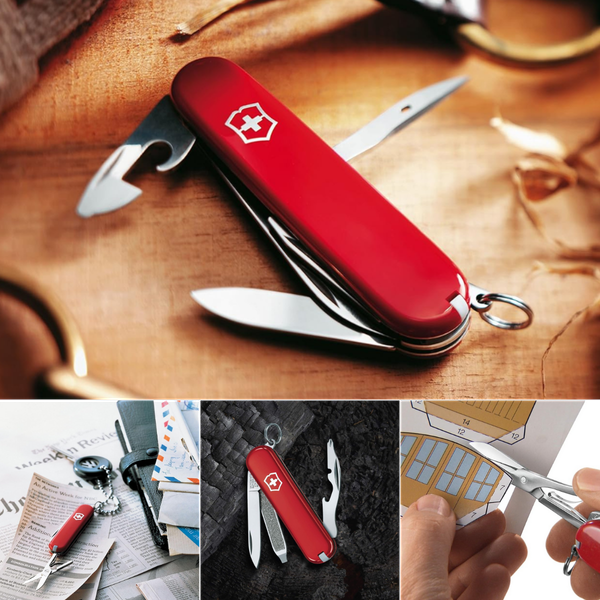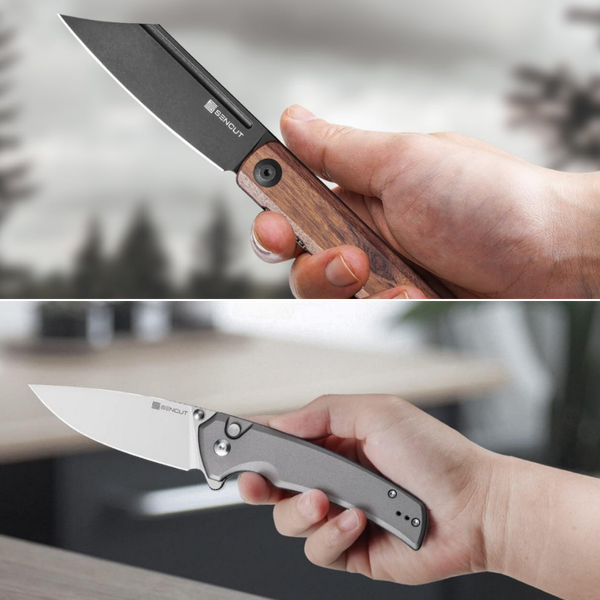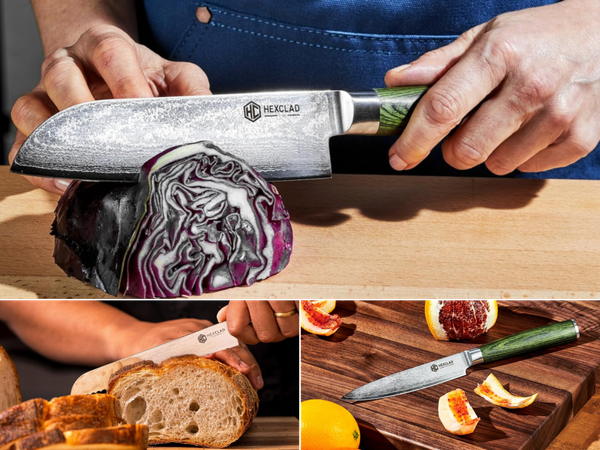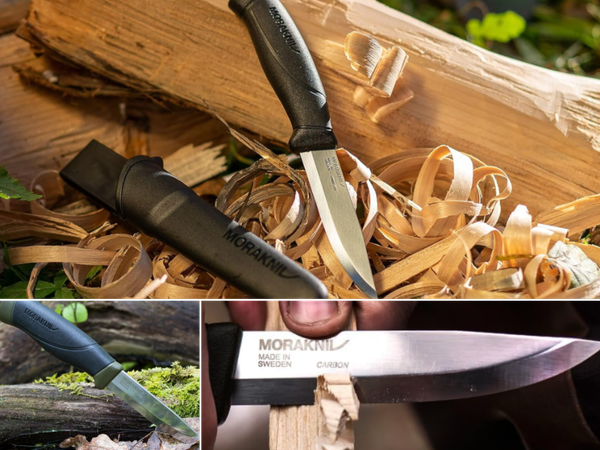This site contains affiliate links. As an Amazon Associate, I earn a commission from qualifying purchases at no extra cost to you. Full Disclosure Here.
If you're looking for a versatile knife to add to your kitchen cutlery, then you may want to consider Santoku knives. A Santoku knife is a Japanese-style knife that can be used for various chopping, slicing, and dicing tasks giving you more options. It's typically shorter and narrower than a Western-style chef's knife.
But with so many on the market, how do you know which one is right for you? In this guide, we will take a look at some of the best Santoku knives available for every budget. We take knife shopping seriously sp take a look at our Santoku knife buyers guide to help you learn about santoku knives and choose the right one for your kitchen needs.
We read hundreds of articles personally on Amazon to find the best knives available today. Every size, type of steel, blade and handle material from the leading manufacturers in the industry. We even considered lesser-known brands that might be up and coming. In the end, we compiled a list of what we believe are the best knives on the market today. Check out our top picks and see for yourself, Whether you are looking for an affordable option or a high-end model, we have chosen a Santoku for everyone.
So, what makes the best Santoku knife? Is it blade length, overall length, blade design, or durability? Actually, they all play their part in making the best knife. Whether you are an avid chef in your kitchen at home or the finest restaurant in town only the best knife will do! We will show you the best knife in your budget so that you can get prepared for your ideal Santuko knife and pick one up today!
The right Santoku knife blade is long enough to provide ample chopping area, but not so long that it becomes unwieldy offering a significant advantage over general-purpose knives. The overall length of the knife should be comfortable for your hand, and the blade should be made from high-quality steel and blade thickness that is designed to withstand years of use comparable to the finest chef's knives.
Finally, most Santuko knives will have a comfortable grip, possibly with a textured handle, that ensures safe and easy handling with a firm grip. Whether you are dicing fruits or slicing meat, fish, and vegetables the thinner blade allows you to create extra thin slices with reduced friction and excellent cutting edge. The best Santoku for you is not necessarily the most expensive Santoku knife. With these factors in mind, you can narrow down your options and choose the best Santoku knife for your needs.
Our Top Picks for Every Budget
CUTLUXE – 7" Chopping Santoku Knife: Best Santoku Under $50
Why It’s the Best
When it comes to kitchen knives, few are more versatile than the Santoku. Perfect for slicing, dicing, and mincing, this all-purpose knife is a must-have for any home cook. And when it comes to Santoku knives, few are more premium than the Cutluxe. Made with a perfectionist's eye, this knife is flawlessly balanced and razor-sharp, ready to tackle any kitchen task. The blade is precision-forged from a single piece of high-carbon German steel, ensuring an ultra-sharp cutting edge that can handle even the toughest cutting jobs. The ergonomic Pakkawood handle provides perfect balance and maximum comfort, while the knife's weight and balance make it ideal for heavy-duty work. Whether you're working with delicate vegetables or thick cuts of meat, the Cutluxe Santoku Knife is up to the task. So if you're looking for the best budget Santoku knife money can buy but the cost is a deal-breaker, look no further than Cutluxe.
Things You Should Know
You need a great knife to make cooking easier, but don't want to spend a fortune. Cutluxe offers the perfect solution with our high-quality Santoku blade. Our knives are forged of German steel and hand-sharpened blade edge for precision slicing every time. The luxury pakkawood handle is triple-riveted for a sure grip and absolute stability that ensures comfort and maneuverability much like a chef's knife. Laminated and polished for a sanitary build, perfect for busy kitchens. A precisely forged of high-carbon German steel engineered to perfection at 56+ Rockwell hardness for unparalleled long-lasting performance while maintaining blade sharpness, and is rust and stain-resistant. Lifetime warranty included - we're proud to say we believe in our blades.
ZWILLING Twin Signature 7-inch Hollow Edge Santoku Knife: Best Santoku Under $100
Why It’s the Best
The ZWILLING Twin Signature 7-inch Hollow Edge Santoku Knife is a good knife you can get for under $100 and still maintain the quality of the best Santoku knives. The blade is made of high-carbon German steel that is engineered to be 56+ Rockwell hardness for an unparalleled long-lasting performance cutting edge. The blade is also rust and stain-resistant. The luxury pakkawood handle is triple-riveted for a sure grip and absolute stability that ensures comfort and maneuverability. The handle is also laminated and polished for a sanitary build, perfect for busy kitchens. This knife is the perfect choice for anyone looking for a reliable, high-quality Santoku knife.
Things You Should Know
You need a durable, lightweight knife that will resist rust and hold its edge. Traditional knives are often made of two pieces that are welded together, which can lead to weak spots and makes the knife more susceptible to rusting.
Our German-made knife is precision-stamped from a single piece of high carbon steel for superior strength and durability. Our forging process creates an ice-hardened FRIODUR blade that stays sharper longer and has superior resilience. The well-balanced ergonomic polymer handle is perfectly bonded to create a full tang knife that will retain a razor-sharp edge with a 57 Rockwell Hardness creating excellent edge retention. Edge angle 10° per side.
WÜSTHOF Classic IKON 7" Hollow Edge Santoku Knife: Best Santoku under $200
Why It’s the Best
WÜSTHOF was founded in Solingen, Germany over 200 years ago and has been family-owned for seven generations. Long renowned as “The City of Blades,” Solingen has earned the reputation for crafting fine cutlery generation after generation. Located in Western Germany near the banks of the Wupper River.
Solingen has been home to master blacksmiths for over 2,000 years. WÜSTHOF continues to call the picturesque city of Solingen its home, and proudly marks each blade as “Made in Solingen.” If you're looking for a high-quality knife that will last a lifetime, you can't go wrong with a WÜSTHOF.
The best manufactured Santoku knives offer a perfect balance of edge retention, durability, and ease of use. With the Classic Ikon, you get all three in a beautiful package. The double bolster design provides professional-style heft and exceptional balance.
The POM handle is highly durable and resists fading and discoloration. Its elegant shape is designed for a comfortable grip, making it easy to use even for beginner cooks. With its excellent performance and stunning looks, the Classic Ikon is a great choice for any kitchen.
Things You Should Know
You love to cook, but it's hard to find the right knife that feels great in your hand and is also razor-sharp. A dull knife is not only frustrating to use but can be dangerous. It's time to upgrade your knives and get a good Santoku knife that will make you feel like a pro in the kitchen.
The WÜSTHOF CLASSIC IKON SERIES knives are just what you need. They're forged from a single block of high carbon stainless steel and then tempered to 58-degree HRC for superior sharpness and edge retention. Plus, the Precision Edge Technology (PEtec) yields blades that are 20% sharper than previous models. With their sleek black handles and double bolster for exceptional balance, these knives are as beautiful as they are functional.
Miyabi Birchwood SG2 7" Santoku Knife: Best Top of the Line Knife
Why It’s the Best
A Top-of-the-line MIYABI Birchwood is a work of culinary art. Both blade and handle are crafted from the most precious materials, which shape their striking appearance. More than meets the eye, the potent core of SG2 micro-carbide powder steel is protected by 100 layers of steel.
MIYABI's innovative, ice-hardening process locks in the long-lasting sharpness of the CRYODUR blades. Beneath its beautiful exterior, the flower Damascus pattern provides added durability. The scalpel-like blade is complemented by an equally striking Karelian Birch handle. A prized material for knife handles, Karelian Birch is also the only wood ever used in a Faberge egg.
Exquisite and ergonomic, MIYABI Birchwood knives feel as good as they look. Handcrafted in Seki, Japan, this Santoku knife belongs in every kitchen where those who love to cook can display their skills with ease.
Things You Should Know
Traditional Japanese knives are known for their thin blade profile, but they can be expensive and difficult to care for. Miyabi has designed an authentic thin Japanese blade profile that is hand-honed using the three-step Honbazuke process to a 9.5 to 12-degree edge. The CRYODUR blade is ice-hardened to Rockwell 63 and is a 101-layer flower Damascus design with a katana edge. This knife is perfect for anyone who wants the performance of a traditional Japanese knife without the high price tag or maintenance requirements to satisfy a diehard fan.
FAQs about the Santoku Knife
Which knife is best the Santoku or chef?
There is no definitive answer to this question as it depends on personal preferences. Some people prefer Santoku knives because they have a shorter blade that makes them easier to handle, while others prefer chef knives because they have a longer blade that gives them more leverage when cutting and refined slicing. Ultimately, it comes down to what feels most comfortable in your hand and what you are most skilled at using.
What is the difference between a Chef knife and Santoku?
There is a lot of debate about the difference between chef knives and Santoku knives. Some say that Santoku knives are just Japanese-style chef knives, while others claim that there are definite differences.
A double bevel versatile chef's knife is usually larger and has a sharper point with the blade shape, while Santoku knives are smaller but with a tall blade and have a blunt point. Chef knives are better for slicing meat, while Santoku knives are better for slicing vegetables using a pinch grip keeping food sticking minimal compared to other knives.
In general, most people find them easier to use than chef's knives because they're smaller and more lightweight. But ultimately it's up to your personal preference which type of knife features and cutting-edge design you prefer.
Why is it called a Santoku knife?
This knife design is called a Santoku because it is a Japanese word meaning "three virtues." The three virtues are that the knife features are suited for a cutting board and making it good for slicing, dicing, and mincing.
What is a Santoku knife used for?
They are used for general purpose slicing and dicing. The blade is typically 17-18 cm long (7-inch blade) with a width of around 2.5 cm ( 1 inch) and a weight of around 140 grams (5 ounces).
The blade is double-beveled (has two edges) high carbon steel which makes it suitable for both right and left-handed users, and the sheep's foot shape ensures a good grip.
Because the knife has a balanced weight and the blade is thin to reduce friction, it is easy to control making it ideal for precision work for new cooks and professionals alike. It is particularly well suited to cutting vegetables, but can also be used for cutting meat and fish.
What knife does Gordon Ramsay use?
Gordon Ramsay uses a variety of knives in the kitchen, but his favorite knife is the Wüsthof Classic Ikon 8-inch knife. This knife is designed for slicing, dicing, and mincing and has a full-tang blade that is made from high-carbon stainless steel. The handle is made from durable synthetic materials and has a triple-riveted design for a secure grip.
This knife can be used for both wet and dry preparations and has a reversible blade that can be sharpened at both 20 and 40 degrees. It also comes with a lifetime warranty from Wüsthof.
Can you rock chop with a Santoku?
Yes, you can definitely rock chop with a Santoku. In fact, it is designed for chopping tasks like this. The curved blade makes it easy to quickly chop ingredients using the whole knife by rocking the knife back and forth utilizing the blade shape. Some prefer the Santoku's blade over a chef's knife for this reason. Give it a try!
How do you sharpen a Santoku knife?
To sharpen your Santoku or any knife, you will need a honing rod, water, and a dishcloth. First, wet the honing rod with water. Next, run the blade of the knife down the honing rod 3-5 times on each side. Finally, wipe off the blade with a dishcloth. Honing steel takes some practice so try learning on a cheaper kitchen knife or western knife to get the best sharpness. You should also look to see if your knife is a single bevel, Granton edge, or double bevel before you start your sharpening work. A sharpening guide video can be used if you want more detailed instruction.
Why do Santoku knives have dimples?
Most people think that the main purpose of the dimples on a Santoku knife is to prevent food from sticking to the blade. However, the dimples actually serve two other important functions.
First, they help to keep the blade sharper for longer by evenly distributing the force exerted on the edge of the blade. Second, they help to minimize resistance when cutting through tough or fibrous foods. So, if you're looking for a knife that will stay sharp and make quick work of tough ingredients, a Santoku with dimples is lighter weight and a great option!
Can a Santoku replace a chefs knife?
Yes, it can definitely replace a chef's knife for many purposes. It is a Japanese-style knife that is typically thinner and lighter than a chef's knife, with a curved blade that is good for slicing. It is not as versatile but it can be used for most slicing and chopping tasks.
What does Santoku mean in Japanese?
Santoku (translated to "three uses") is a versatile Japanese kitchen knife that can be used for slicing, dicing, and mincing. Most Santoku knives have a relatively short blade that is between 5 and 7 inches long. The Santoku knife is a fairly recent addition to Japanese culture, and it is thought to have originated in Europe during the late 18th or early 19th century.
The knife became popular in Japan during the Meiji period (1868-1912) when Western culture and technology were first introduced to the country. It is often used by sushi chefs to prepare fish, but it is also a great all-purpose knife in the kitchen that can be used for cutting meat or to cut vegetables.
The Best Knife for You
It can be difficult to choose the Santoku knife for your needs. You need to consider how often you will use it, the quality of the knife, the best value, and the manufacturer’s reputation. If you are on a tight budget a good Santoku knife with a steel blade is an option over high carbon stainless steel for home cooks on a budget we have some affordable recommendations for you.
However, if you plan on using your Santoku frequently or want the best quality possible, then expect to spend a little more money for the best knives. No matter which option you choose, make sure you get a warranty with your purchase. We hope this article has helped make your decision easier. Have you made your final choice? Get your next favorite knife today!


